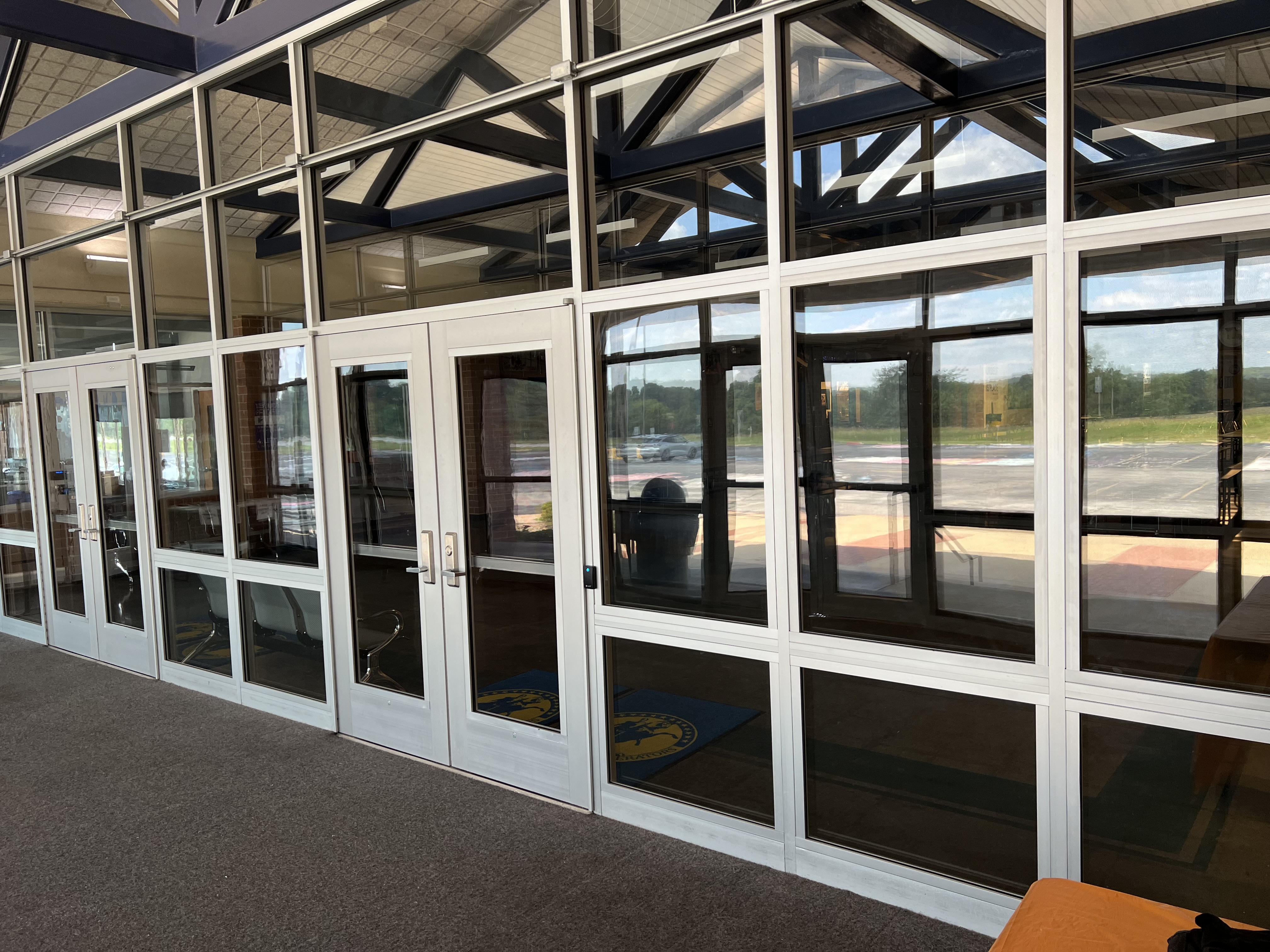School safety remains a critical concern for educators, administrators, and educational facility managers. Headlines and reports continue to highlight rising incidents of targeted violence, unauthorized access, and forced entry attempts in school settings.
While training, communication systems, and policies are all essential parts of a comprehensive school safety plan, physical security infrastructure often plays the most immediate role in protecting students and staff when a threat occurs.
A layered physical security strategy — including security glazing, window protection screens, and interior security shutters — addresses many of the most serious school safety issues and helps schools create safer, more resilient campuses, providing peace of mind for students and staff alike.
Mitigating School Safety Issues with Physical Security Measures
1. Forced Entry and Unauthorized Access
Forced entry attempts, whether carried out by vandals, thieves, or those intending harm, remain one of the top physical threats to schools. Main entrances, windows or vision panels in classroom doors, and ground-level windows are common entry points that can be compromised quickly if not properly reinforced.
One of the most effective ways to slow or prevent forced entry in schools is through implementing security glazing.
Unlike standard tempered or laminated glass, forced entry-resistant security glazing systems, such as Riot Glass solutions, are engineered to withstand prolonged physical attacks using tools like hammers, crowbars, or bricks. These systems maintain their integrity long enough to significantly delay or deny unauthorized entry altogether.
If the forced entry attempt occurs during school hours, this gives staff time to initiate lockdown procedures and call law enforcement.
In many cases, schools can retrofit their existing doors and windows with forced entry-resistant glazing panels without needing to replace them, making this a highly cost-effective upgrade, especially for schools working with limited security budgets.
2. Active Threats and Targeted Violence
Though statistically rare, targeted attacks involving weapons remain among the most devastating safety risks for schools. When these incidents occur, the building’s physical barriers are often the only line of defense between the attacker and those inside.
For high-risk areas like main entrances, administrative offices, classrooms, and shelter-in-place zones, ballistic-grade security glazing offers a higher level of protection. This specialized glazing is tested to resist gunfire from specific types of firearms without immediately shattering or allowing penetration, keeping threats out while shielding occupants inside and providing critical time for them to react and get to safety.
Although no glazing is entirely "bulletproof," bullet-resistant glass and polycarbonate systems can provide ballistic protection and prevent or significantly delay armed intruders from gaining access, buying critical time for emergency response.
3. Vulnerable Perimeters and Unsecured Windows
While front entrances tend to get the most attention, side doors, classroom windows, and rear access points are often overlooked in school security planning. These areas may lack supervision or security infrastructure, making them ideal targets for forced entry.
In addition to security glazing, stainless steel window security screens provide a simple, yet highly effective solution for vulnerable window openings. Built with high-tensile stainless steel mesh in robust framing systems, these screens protect against break-ins while maintaining visibility and airflow. Unlike bars or grates, they preserve the learning environment’s aesthetics and can double as insect screens.
For ground-level classrooms or windows near high-traffic areas, security screens act as a durable barrier that prevents glass breakage and deters tampering — without sacrificing all natural light or views of the outdoors that teachers and students benefit from.
4. Interior Open Areas That Are Difficult to Secure
Many schools feature large, open-plan spaces like cafeterias, libraries, gymnasiums, or shared common areas that are challenging to secure quickly during emergencies. These spaces often lack physical barriers, making it difficult to restrict movement or create lockdown zones.
Security shutters — like QMi’s AL8 aluminum shutter systems — offer an ideal solution for securing open indoor spaces. These shutters can be installed in wide entryways, hallways, or partition areas and deployed quickly when needed. Once closed, they provide a solid, lockable barrier that can:
- Limit access to specific zones
- Prevent intruders from moving freely through the building
- Shield students and staff during emergencies
Security shutters are especially effective in schools where full architectural renovations aren’t feasible, providing adaptable security without permanent walls.
5. Delayed Lockdowns and Emergency Response Times
Even with training and protocols in place, school safety issues often unfold faster than staff can effectively respond. During incidents of targeted violence, seconds matter — and schools need passive systems that work immediately, without needing a manual trigger.
Layered physical security is one of the most reliable ways to reduce response-time pressure. When entry points are reinforced with security glazing, windows are protected with durable screens, and open areas can be sealed off with shutters, schools are no longer relying solely on human response or technology to protect their communities.
These physical barriers help delay intrusions, slow down attackers, and create time for emergency notifications, lockdowns, and law enforcement arrival.
Making School Safety Work in the Real World
Physical upgrades don’t have to turn schools into fortresses. The goal is to create safe, welcoming environments that are also equipped to withstand threats if and when they arise.
At QMi, we work with schools across the country to implement practical security improvements that blend seamlessly into existing structures and support a balanced approach to campus safety.
The safety issues schools face are unlikely to disappear anytime soon, but with the right physical protections in place, schools can dramatically reduce risk and improve their ability to respond effectively under pressure.
Whether you're planning a new campus build, retrofitting an older school, or looking to address specific vulnerabilities, physical security measures like security glazing, screens, and shutters should be a central part of your strategy.
Interested in evaluating your school’s physical security infrastructure? QMi can help you identify key vulnerabilities and recommend effective solutions tailored to your building’s layout and threat profile. Contact us now for a free consultation.

